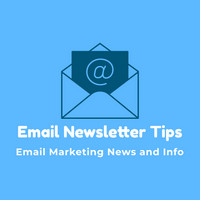Creating HTML email newsletters is a fantastic way to engage your audience, whether you’re running a business, promoting an event, or just sharing exciting updates. With the right coding techniques, you can make your emails visually appealing, easy to read, and professional-looking. Here are some easy steps to help you code HTML email newsletters like a pro.
First things first, when coding your HTML email newsletter, it’s crucial to keep things simple. Email clients can be picky, so avoid using complicated layouts or excessive design elements. Stick to a clean and minimalistic design to ensure your newsletter looks great across different devices and email platforms.
Start by writing your HTML code in a way that is structured and easy to read. Use tables to create your layout, as they are well-supported in most email clients. Remember to include inline CSS styles for your formatting, as external stylesheets may not always be supported. This will help ensure that your newsletter displays correctly for your recipients.
When adding images to your newsletter, make sure to host them on a reliable server and use absolute URLs in your code. This will prevent any broken image links and ensure that your images load correctly for your subscribers. Optimize your images for the web to reduce file size and improve loading times.
Testing is key when it comes to HTML email newsletters. Before sending out your newsletter, make sure to test it across different email clients, devices, and screen sizes. This will help you identify any formatting issues and ensure that your newsletter looks great for all your subscribers.
Personalization can go a long way in engaging your audience. Consider using merge tags to dynamically insert subscriber names or other personalized content in your newsletters. This small touch can make your emails feel more tailored and increase engagement.
It’s also important to include a clear call-to-action in your HTML email newsletter. Whether it’s a button, a link, or a form, make sure it stands out and prompts your subscribers to take the desired action. Keep your CTA concise and compelling to encourage clicks.
Lastly, stay up to date with best practices and trends in HTML email design. Subscribe to newsletters from other companies or organizations to get inspiration and stay informed about what works well in email marketing.
In conclusion, coding HTML email newsletters doesn’t have to be daunting. By following these simple steps and keeping your design clean and user-friendly, you can create engaging newsletters that resonate with your audience. Remember to test your newsletters thoroughly, personalize your content, and include clear CTAs to drive engagement. Happy coding!
